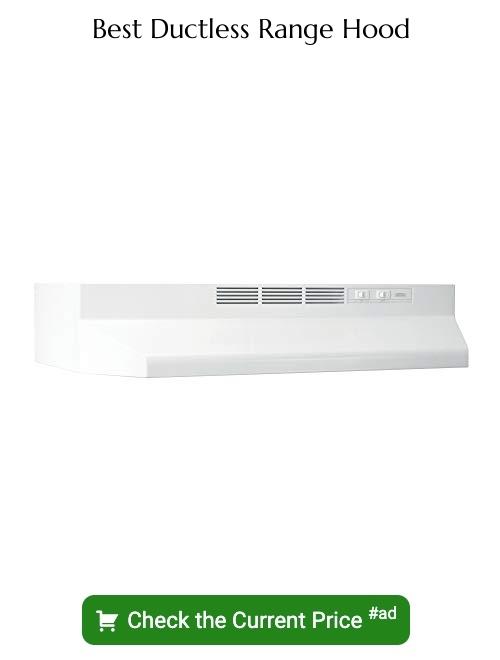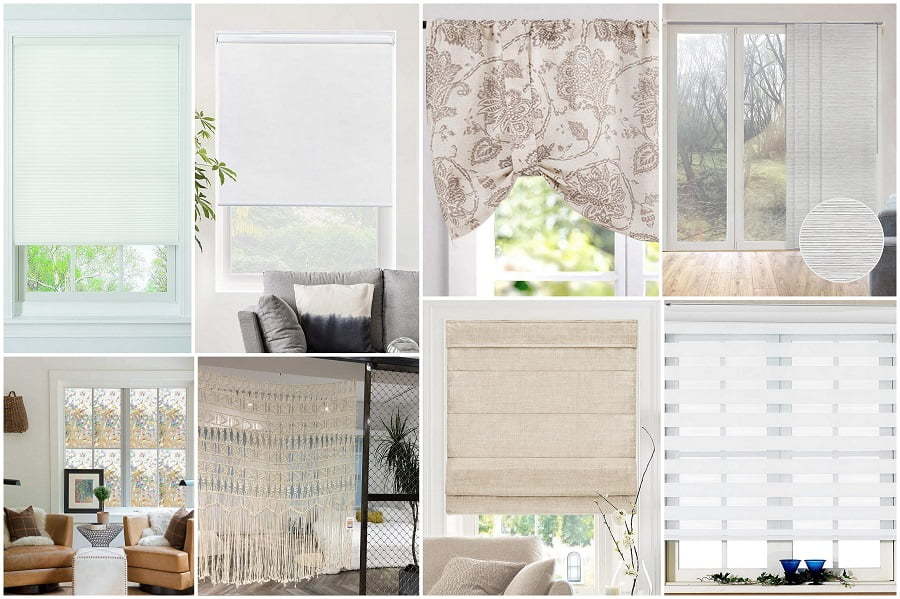Last updated on
Revamp your kitchen without breaking the bank with these alternative range hood ideas. Read on!
We’ve all seen countless kitchens with the same standard range hood. Don’t get me wrong, they serve their purpose, but why settle for something so mundane when you can have a unique and stunning alternative?
In this article, I’ll be sharing 15 creative kitchen range hood alternatives that will not only elevate the look of your kitchen but also save you some money.
From DIY projects to unconventional materials, we’ll explore the advantages and disadvantages of each idea so you can make an informed decision on which one is right for your home.
So let’s dive in and discover how you can transform your kitchen into a stylish space without breaking the bank!
Microwave Range Hood

The microwave range hood is one of the most popular kitchen range hood alternatives. This option combines two appliances in one, saving both space and money.
The microwave range hood can be installed above your stove to provide ventilation while functioning as a standard microwave.
One advantage of this option is its convenience – you don’t have to purchase and install separate appliances for cooking and venting. It’s easy to use with simple controls that are familiar if you’ve used a regular microwave before.
However, there are some disadvantages to consider as well. First, these units may not be as powerful or effective at removing smoke or steam as traditional hoods. They also tend to be louder than other options due to their dual functionality.
Another thing worth noting is that if your current setup doesn’t include an over-the-range cabinet or shelf for mounting the unit on top of your stove area, installation costs could add up quickly since additional carpentry work will need to be done first before installing it properly.
But if you’re looking for an affordable way out without sacrificing too much functionality when upgrading your kitchen’s ventilation system then going with a Microwave Range Hood might just do the trick!
Downdraft Vent System
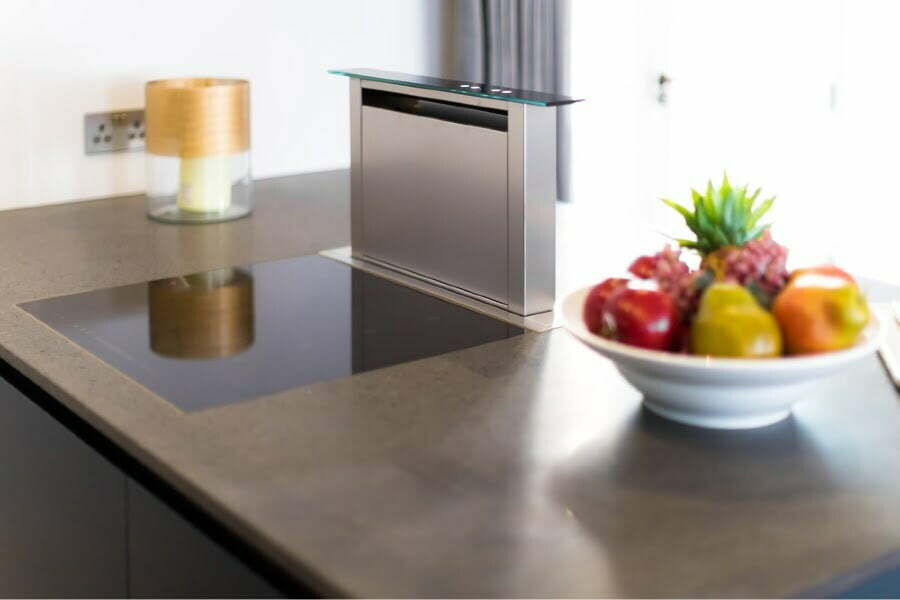
One alternative to the traditional kitchen range hood is a downdraft vent system. This ventilation system pulls smoke, steam, and cooking odors down through the cooktop and out through ductwork under the floor or behind cabinets.
One advantage of a downdraft vent system is that it doesn’t obstruct your view while cooking. It also takes up less space than an overhead range hood, which can benefit smaller kitchens where every inch counts.
However, one disadvantage of this type of ventilation is that it may not be as effective at removing smoke and steam as an overhead range hood since hot air rises naturally. Installation can be more complicated since ductwork needs to run beneath the floor or behind cabinets.
If you have limited space in your kitchen or prefer an unobstructed view while cooking but don’t mind sacrificing some effectiveness for convenience then a downdraft vent system could be worth considering as an alternative to traditional kitchen range hoods.
Wall-mounted Chimney Hood

The wall-mounted chimney hood is one of the most popular kitchen range hood alternatives. This type of range hood is mounted on the wall above your stove and has a chimney that extends up to your ceiling.
The advantage of this style is that it provides excellent ventilation, efficiently removing smoke, steam, and cooking odors from your kitchen.
Wall-mounted chimney hoods come in various sizes and styles to fit any kitchen decor. They are also relatively easy to install compared to other range hoods.
However, one disadvantage could be their size; they can take up valuable space in smaller kitchens or those with low ceilings.
Another thing you should consider when choosing a wall-mounted chimney hood is its noise level during operation, as some models can be pretty loud while others operate quietly without disturbing conversations or music playing in the background.
If you have enough space for a larger-sized range hood with an efficient ventilation system and don’t mind spending extra money on installation costs (if necessary), then a wall-mounted chimney-style might be perfect for you!
Island Range Hoods
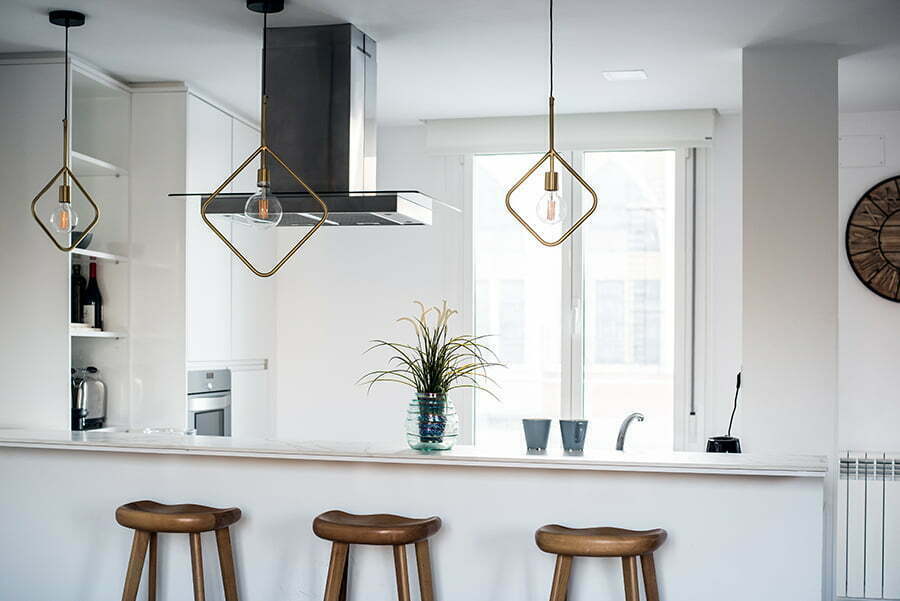
One popular alternative to traditional range hoods is the island range hood. As the name suggests, this hood is installed above a cooktop on an island in the center of a kitchen.
Island range hoods are perfect for open-concept kitchens without a wall to mount a traditional hood.
One advantage of an island range hood is that it provides excellent ventilation and can effectively remove smoke, steam, and cooking odors from your kitchen. They add visual interest to your space and can serve as a statement piece in your design.
However, one disadvantage of an island range hood is that they require professional installation, which can be costly. Also, if you have low ceilings or limited space between your cooktop and ceiling height, then this may not be the best option for you.
Overall though, if you’re looking for something unique with great functionality, then consider installing an island range hood!
Ceiling-mounted Extractor Fan
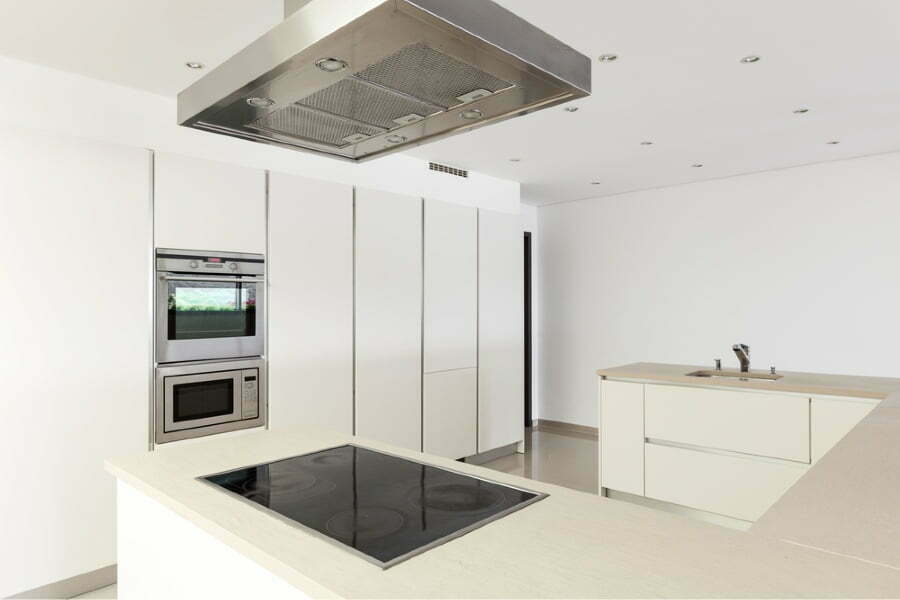
A ceiling-mounted extractor fan is one of the most popular alternatives to a traditional kitchen range hood. This type of fan is installed directly into the ceiling above your stove and works by drawing in smoke, steam, and cooking odors through vents that lead outside.
One advantage of a ceiling-mounted extractor fan is that it can be more discreet than other range hoods. Since it’s mounted flush with the ceiling, it doesn’t take up any wall space or obstruct your view while you’re cooking.
However, one disadvantage to this option is that installation can be more complicated than other alternatives. You’ll need access to your home’s ductwork for the venting system to work correctly.
Suppose you have high ceilings or an open floor plan kitchen/living area. In that case, this may not be as effective at removing smoke/odors from all areas as other options like downdraft ventilation systems placed on cooktops instead!
Recirculating (Ductless) Range Hoods
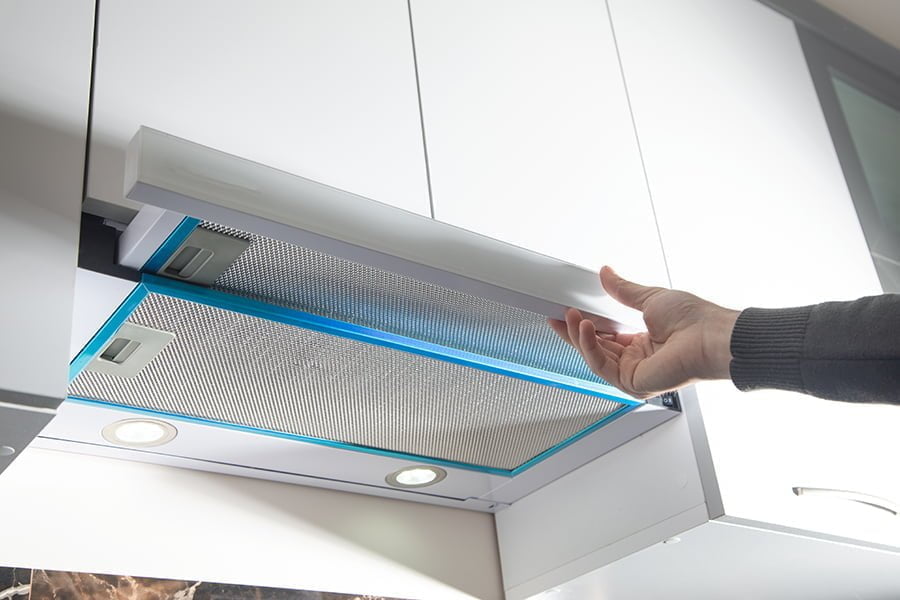
Recirculating range hoods, or ductless range hoods, are a popular alternative to traditional vented range hoods. These types of hood filter the air and then recirculates it back into the kitchen instead of venting it outside.
One advantage of recirculating range hoods is that they are easier and less expensive to install since there’s no need for ductwork or an external exhaust system. They can be installed in any part of your kitchen without worrying about where the vents will go.
However, one major disadvantage is that they don’t remove moisture or heat from your kitchen like a vented hood would do. Instead, they only filter out smoke and odors, so you’ll still have some humidity in your cooking area.
Another downside is that you’ll need to replace their charcoal filters regularly (usually every 3-6 months), which can add up over time compared with just cleaning grease filters regularly.
Overall, if you’re looking for an affordable option with an easy installation process, and don’t mind having some residual moisture left behind after cooking, recirculating range hoods might be worth considering!
Custom Built-in Hood Designs
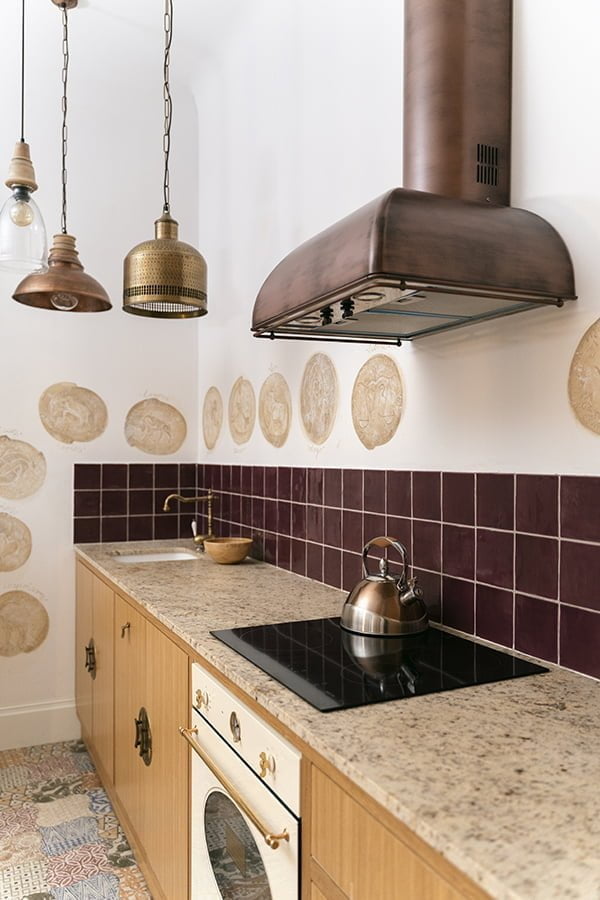
Custom built-in hood designs are a great option for creating a seamless and cohesive look in their kitchen. These hoods can be designed to match the cabinetry or other elements of the kitchen, making them blend seamlessly into the space.
They also offer more flexibility in size and shape, as they can be customized to fit any space.
One disadvantage of custom built-in hood designs is that they are more expensive than other options on this list. Installation may require professional help due to its custom nature.
However, if you’re looking for a high-end and personalized touch for your kitchen range hood alternative, this might be a perfect choice!
Window Exhaust Fans
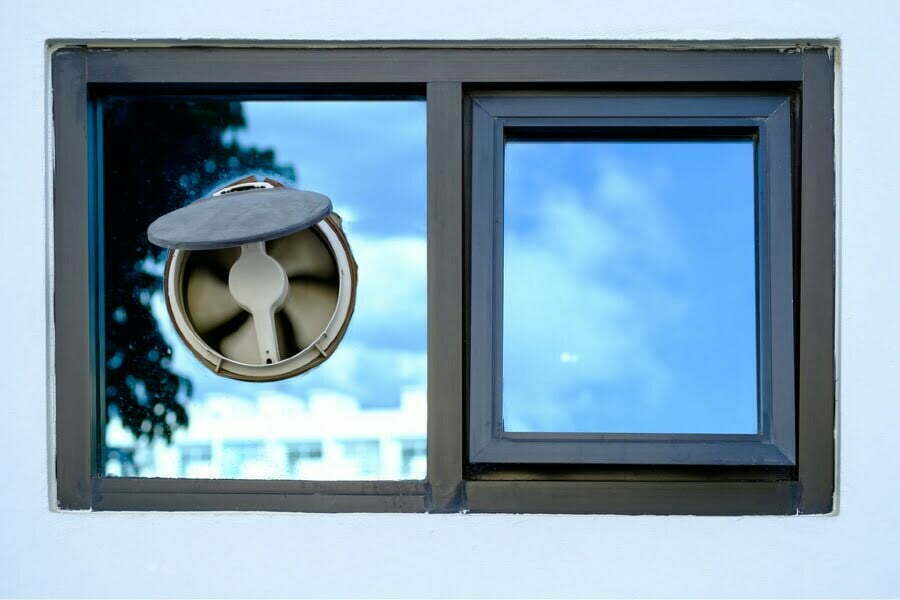
One alternative to a traditional kitchen range hood is a window exhaust fan. This type of fan is installed in the window above the stove and works by pulling smoke, steam, and cooking odors out of the kitchen.
One advantage of this option is that it can be less expensive than installing a full-range hood system. It takes up no additional space in your kitchen as it utilizes an existing opening.
However, there are also some disadvantages to consider before choosing this option. Window exhaust fans may be less effective at removing smoke or grease particles from your cooking area than other options like ducted hoods or downdraft systems.
They may also require more frequent cleaning due to their location near outdoor elements such as dust and pollen.
If you have limited space or budget constraints but still want an efficient way to remove cooking fumes from your home’s interior environment, then a window exhaust fan could be worth considering for its affordability and ease of installation.
Pop-up Downdraft Vents
One alternative to traditional range hoods is the pop-up downdraft vent. These vents are installed directly into the cooktop and rise up when used, then retract down when not needed.
This option is excellent for those who want a sleek and modern look in their kitchen without sacrificing functionality.
Advantages of pop-up downdraft vents include their ability to be hidden away when not in use, freeing up overhead space for other design elements such as pendant lighting or open shelving. They also provide adequate ventilation by pulling smoke and steam down through the vent rather than pushing it outwards like traditional range hoods.
However, there are some disadvantages to consider before choosing this option. Due to their specialized installation requirements, pop-up downdraft vents can be more expensive than standard-range hoods.
They may not work well with gas stovetops since flames can interfere with proper ventilation.
If you’re looking for a unique way to incorporate ventilation into your kitchen while maintaining a clean aesthetic, pop-up downdraft vents could be worth considering – make sure they fit within your budget and cooking needs first!
Ventilator Power Packs

One of the most common kitchen range hood alternatives is ventilator power packs. These potent fans can be installed in a custom enclosure above your cooktop or stove.
The main advantage of this option is that it’s relatively affordable and easy to install, especially if you already have an existing cabinet or enclosure where you can mount the fan.
However, one disadvantage of ventilator power packs is that they may not be as effective at removing smoke and odors as traditional range hoods with ducts. You may need to use higher-powered fans or multiple units for larger kitchens.
Another thing to consider when using ventilator power packs is noise level. Some models can be pretty loud, which could disrupt conversations in open-concept living spaces nearby.
If budget and ease of installation are your top priorities for a kitchen range hood alternative, ventilator power packs might fit the bill perfectly!
Pull-out Cabinet Hoods
Pull-out cabinet hoods are one of the most popular alternatives to traditional range hoods. These are installed inside a cabinet above the stove and can be pulled out.
The main advantage of this type of hood is that it saves space in your kitchen, as it doesn’t take up any wall or ceiling space. Pull-out cabinet hoods are often more affordable than other types of range hoods.
However, there are also some disadvantages to consider before choosing this option. Pull-out cabinet hoods may not be as effective at removing smoke and odors from your kitchen compared to larger-range hood models.
They also require regular cleaning since they collect grease and grime over time.
If you have limited space in your kitchen or want an affordable alternative for a small cooking area, a pull-out cabinet hood could be an excellent choice!
Cooker Head With Integrated Lighting
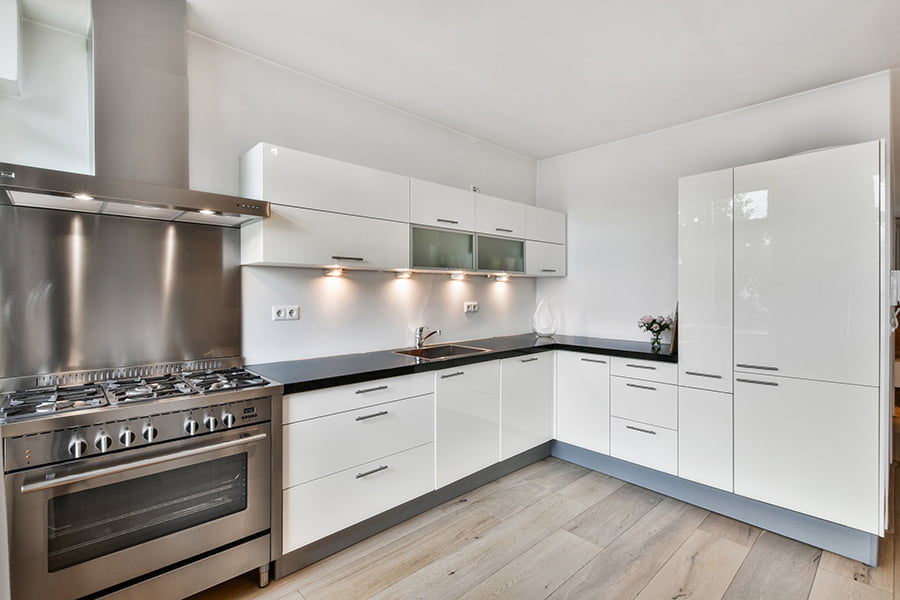
One of the most popular kitchen range hood alternatives is a cooker head with integrated lighting. This option provides ventilation for your cooking area and adds extra light to your workspace.
The integrated lighting can be beneficial when preparing meals during darker hours or in poorly lit kitchens.
The advantages of this alternative include its sleek and modern design, which can complement any kitchen style. It’s also relatively easy to install and maintain compared to other range hood options.
However, one disadvantage is that it may not provide as much ventilation power as traditional range hoods, making it less effective at removing smoke and odors. If you have a larger cooktop or frequently cook foods that produce heavy smoke or steam (such as frying), this option may not be sufficient for your needs.
A cooker head with integrated lighting can be an excellent choice for those looking for an affordable yet stylish way to improve their kitchen’s functionality and aesthetics while still providing some ventilation support.
Air Purifiers

One alternative to a traditional kitchen range hood is an air purifier. Air purifiers work by filtering out smoke, grease, and other particles from the air in your kitchen.
They come in various sizes and styles, including portable options that can be moved around as needed.
One advantage of using an air purifier instead of a range hood is that it can be more cost-effective. Range hoods require installation and maintenance, while most air purifiers only need occasional filter replacements.
However, one disadvantage of using an air purifier as your primary source for removing cooking fumes is that it may not be as effective at capturing all the smoke and steam produced during cooking compared to a range hood with proper ventilation.
If you have limited space or are on a tight budget but still want to improve indoor air quality while cooking in your kitchen without installing expensive equipment like traditional hoods or vents, consider investing in an efficient high-quality HEPA filter-equipped Air Purifier could prove beneficial for you!
Heat Exchangers
One alternative to a traditional kitchen range hood is a heat exchanger. A heat exchanger captures the hot air and steam produced during cooking and passes it through a series of metal plates, where it is cooled down.
The cooled air then circulates back into the kitchen while the moisture is collected in a separate container.
One advantage of using a heat exchanger instead of an overhead range hood is that it can be more energy-efficient since it recirculates heated air back into your home instead of venting it outside. Because no ducts or vents are required for installation, this option can be less expensive than installing an overhead range hood.
However, one disadvantage of this method may be that some homeowners find their kitchens still have lingering smells after cooking with solid spices or foods like fish or bacon. Depending on how often you cook and how much moisture your meals produce when cooking at high temperatures (like boiling water), you may need to empty the collection container frequently, which could become inconvenient over time.
If you’re looking for an affordable way to keep your kitchen smelling fresh without breaking the bank on costly ventilation systems – consider investing in one!
Kitchen Air Curtains
Kitchen air curtains are a unique alternative to traditional range hoods. They create an invisible barrier of air that separates the cooking area from the rest of the kitchen, preventing smoke and odors from spreading throughout your home.
One advantage of using a kitchen air curtain is that it can be installed in any kitchen, regardless of size or layout. They are often more affordable than traditional range hoods and require less maintenance since no filters can be cleaned or replaced.
However, one disadvantage is that they may not be as effective at removing smoke and grease particles as traditional range hoods with built-in fans.
Also, some people may find them noisy due to the sound created by their motorized blower system, which circulates air through vents on either side or above your cooktop surface.
If you’re looking for an affordable way to keep your home smelling fresh while cooking without sacrificing style, consider installing a kitchen air curtain!
Recap
